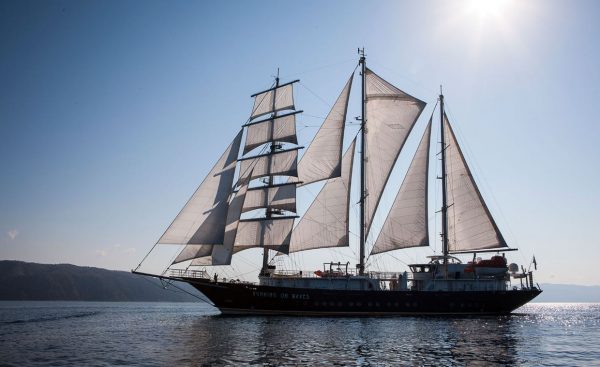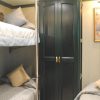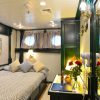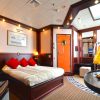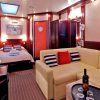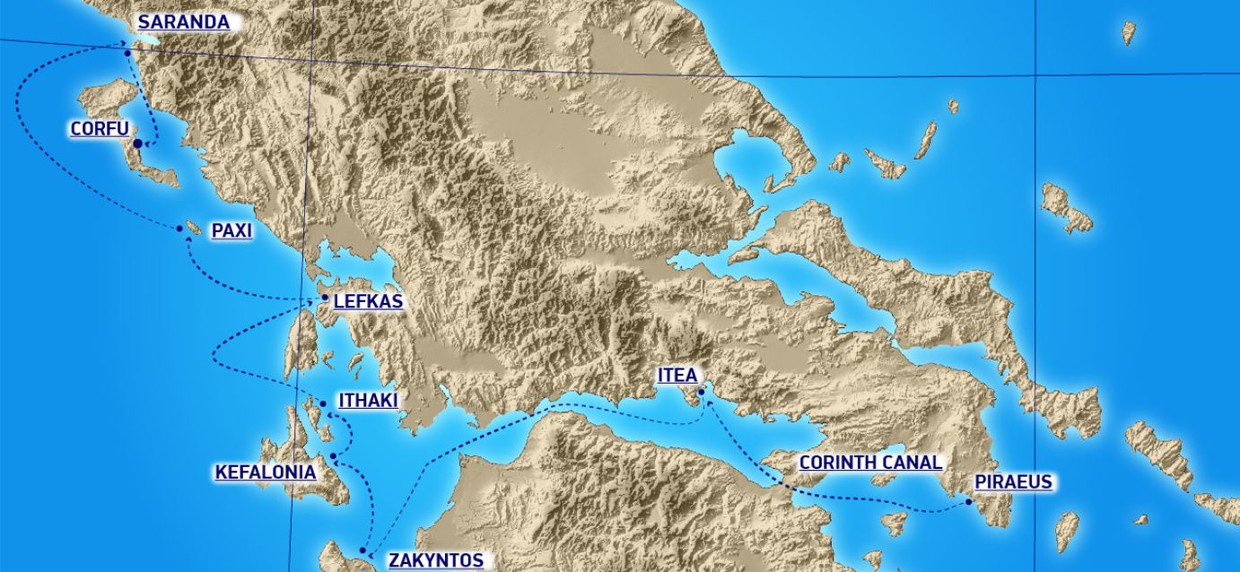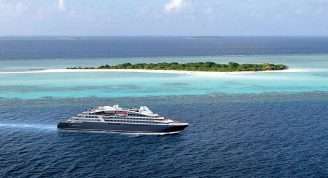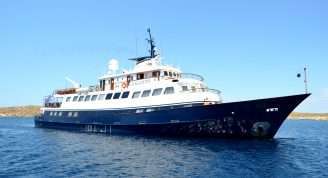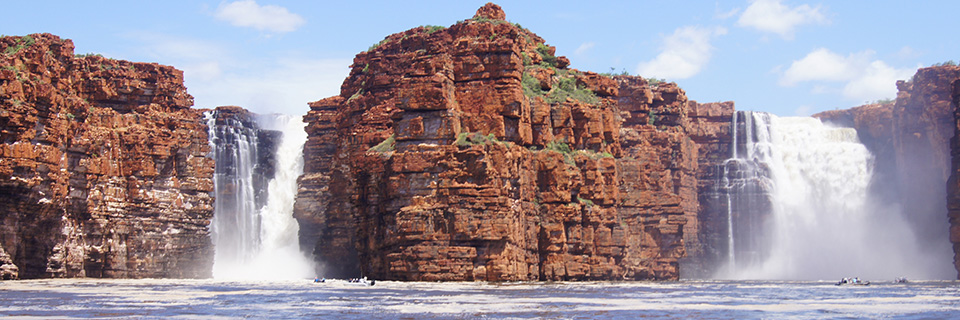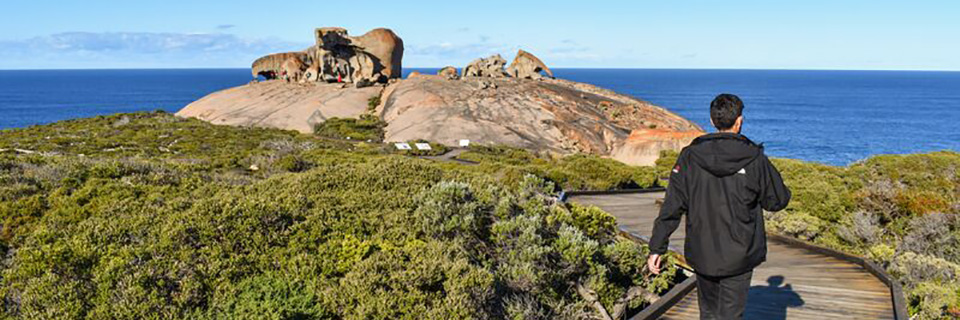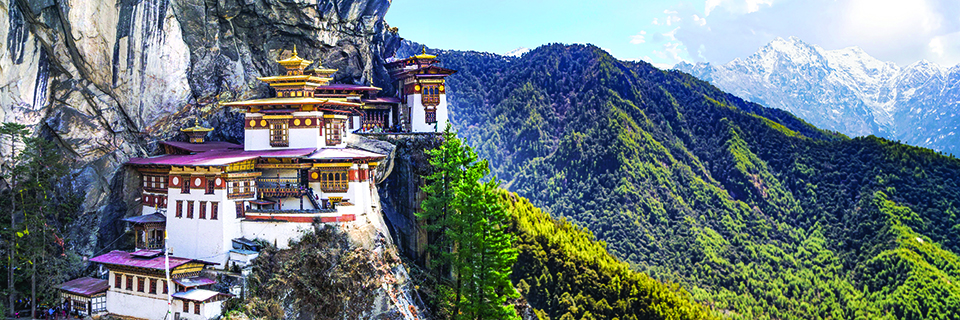Description
All artificial works of art route into Ancient Greece. Where else you can find a divine nature combined with first manmade masterpieces? Get astonished with a handmade prodigy of the Corinth Canal. Visit Ancient Same blessed with holy miracles. Fill up with insouciance of the mountaimns, witness fields of bright red poppies and see loggerhead turles. They are true feast for the eyes. And it is a true miracle someone created all this beauty…
Trip Name
Corinthian Cruise (Running on Waves)
Days
8
Overview
Vessel Type: Three-Mast Sailing Vessel, Barquentine
Length: 64 metres
Passenger Capacity: 42
Running On Waves is one of the biggest sailing yachts in the world. According to SOLAS convention, the highest safety standards are maintained on board a vessel of this class, the same as would apply to a cruise liner carrying thousands of passengers. “Running on Waves” operates under the flag of Malta.
The ship was conceived to combine maneuverability of a sport yacht, the highest standards of comfort and decor, and a shallow draft that allows calling at small marinas inaccessible even to many a big yacht, let alone cruise liners. The unmatched draft of 3.2 metres was made possible owing to a brilliant idea to use lead ballast. The uniqueness of a number of technological solutions confirmed by the US Patent Department.
Every guest of ours enjoys 15,5 square metres of available open teakwood deck space, that is three times more than aboard most expensive cruise ships and would befit a most prestigious private mega-yacht.
The policy of the Company is to always keep the boat in a mint condition. That is why, despite her tender age, we do profound refitting every winter, so that in Spring she welcomes you in full glamour of perfection.
Sails are our main driving power, thus we boast unbeatably low level of fuel consumption, on average 75 l per hour only, which is about 10 times lower than on a motor boat of a comparable size.
Premium comfort notwithstanding, RUNNING ON WAVES is nothing close to a floating hotel or a museum on water, she is a supercharged windship, and with favourable wind can run at 16 – 17 knots under sail. The ship’s superbly efficient ratio of sailing surface to displacement 2 sw.m/t makes her one of the fastest sailboats of old and new times.
To make sailing comfortable at any sea conditions, cutting-edge technologies were used, such as pitch-killing stabilizers, while sophisticatedly calculated mass distribution prevents the hull oscillation frequency from resonating with the frequency, which affects human vestibular system. There are desalinators on board which account for the unlimited supply of fresh water. Air–conditioning throughout the vessel makes you feel a sheikh even in hottest days of Mediterranean summer. Our state-of-the-art hydraulic ramp at the stern of the vessel allows for a direct access to water for swimming and water sports.
Sun Deck
Primary feature — a spacious deck for sunbathing with 16 chaise lounge chairs, which are accessible at any time absolutely free of charge. Additionally, the ship has a large area of covered surfaces, creating vast shaded zones on open decks, which allow for an enjoyable cruise while being protected from the sun. A fresh water Jacuzzi-swimming pool, accommodating six people, is located in the fore of the ship. In the aft of the ship, navigation equipment is behind the command bridge, followed by the massage center and the lounge area. A tour of the command bridge can be arranged at passenger’s request. One may enjoy professional massage services in the massage parlor, followed by some downtime on a small sofa in the lounge area.
Main Deck
The restaurant located on the Main deck is ready to please the ship’s guests with delicacies of Mediterranean cuisine. A fantastic Ocean Bar, located in front of the restaurant in the central part of the deck, offers refreshing drinks and exotic cocktails. You can enjoy your breakfast seated on comfortable sofas located in the cockpit, aft of the ship. Smoking is not prohibited in this zone. An observation deck in the fore of the ship is above the bowsprit, creating the feeling of flying over the water! Mini-suites and Premium cabins are located on the main deck. Size of the cabins vary from 16m2 to 20m2 (172ft2 – 215ft2).
Tween Deck
Passenger cabins occupy most of the tween deck. Crew cabins, companion cabins for the crew and the galley are also located on the tween deck. Fully equipped Water sports center with access to a hydraulic ramp is located in the stern. The stern can be opened up and lowered onto the water, transforming into a diving deck for water sports and recreation. Standard cabins and economy class cabins are located on the tween deck. Cabin sizes vary from 11m2 to 12m2 (118ft2 – 129ft2).


